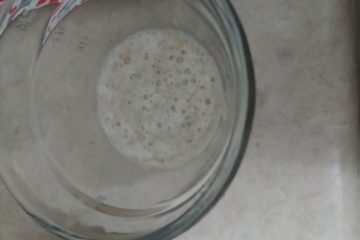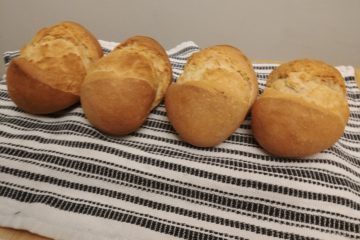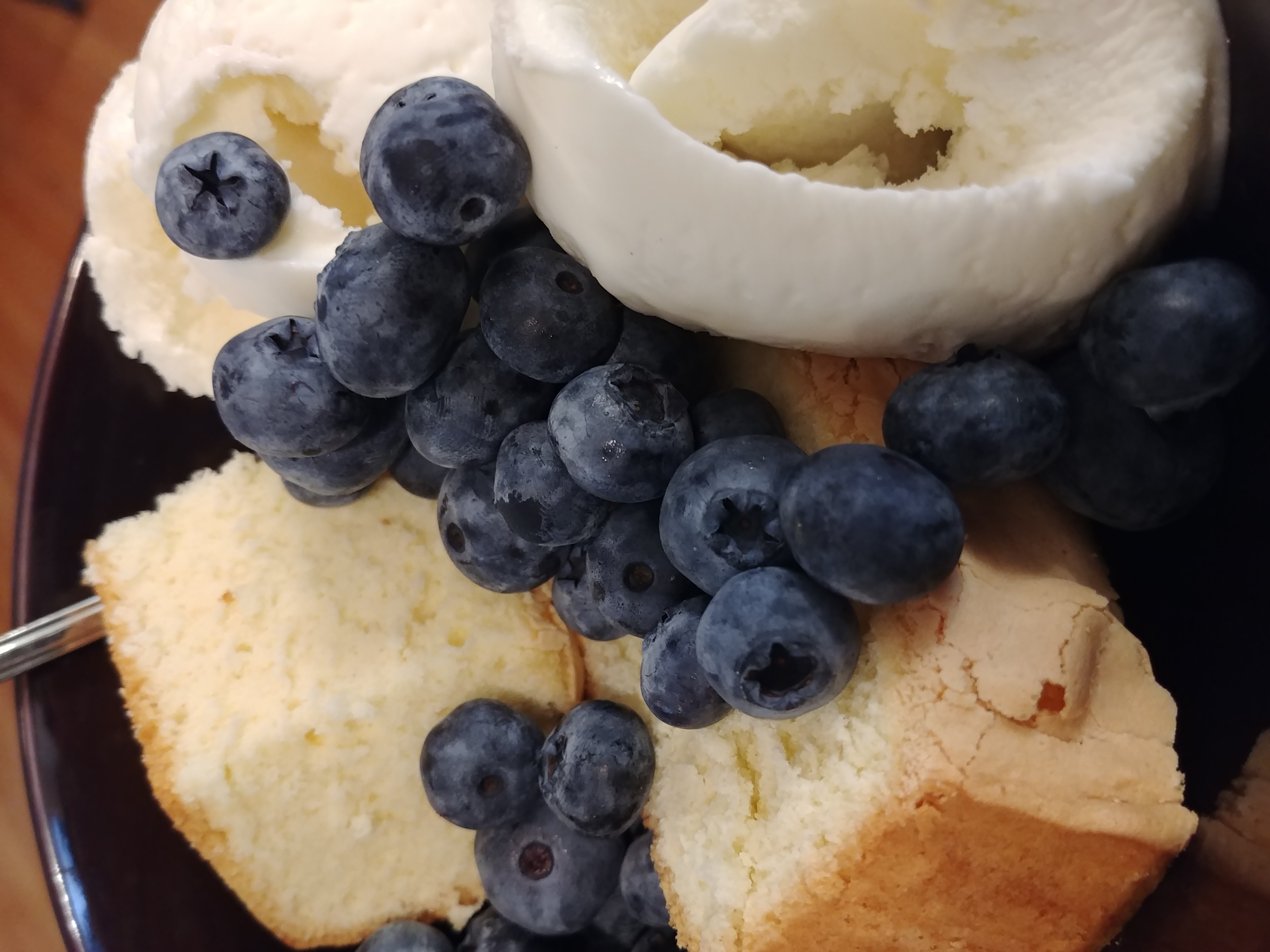30. 31.
An Appetizer from Le Menagier de Paris
I did this a a quick redaction for the Montengarde Culinary Group, I’ve added in the extra information I didn’t have space on my short documentation to include.
Recipe:
Here is the full recipe from Le Menagier de Paris as translated by Janet Hinson:
Common Soups Without Spices Or Thickeners
And first a SOUP of OLD PEAS. It is appropriate to shell them, and to find out from the people the place the nature of the peas of the area (for commonly peas do not cook well in well-water: and in other places they cook well in spring-water and in river water, as in Paris, and in other places, they do not cook at all in spring-water, as at Besiers) and this known, it is appropriate to wash them in a pan with warm water, then put in a pot with warm water on the fire, and boil them until they burst. Then separate the liquid from the solid, and put the liquid aside, then fill the pea-pot with warm water and put on the fire and separate a second time, if you wish to have more liquid: and then put back without water, for they will produce enough. and boil in it; and it is not appropriate to put the spoon in the pot after the separating, but shake the pot and the peas together, and little by little feed them with warm water or a little more than warm but no cold, and boil and cook completely before you add anything except hot water, be it meat or anything else: do not add salt, nor bacon, nor absolutely anything whatsoever until they are fully cooked. You can add bacon water or meat stock, but you must not add any salt, nor even the tip of the spoon, until they are well cooked; you can always stir them by moving the whole pot.
On meat days, you should, after the separating, add water from bacon and from meat, and when it is almost cooked, you can put bacon in; and when you remove the bacon from these peas, you must wash it with meat-stock, so that it looks nicer to put in slices on the meat and so that it does not appear to have peas stuck to it.
On a fish day, when the peas are cooked, you should have onions which have been cooked as long as the peas in a pot and like the bacon cooked separately in another pot, and as with the bacon water you may nourish and serve the peas, in the same way; on fish days, when you have put your peas on the fire in a pot, you must put aside your minced onions in another pot, and with onion water serve and nourish the peas; and when all is cooked fry the onions and put half of them in the peas, and the other half in the liquid from the peas of which I spoke above, and then add salt, And if on this fish day or in Lent there is salted whale-meat, you must do with the whale-meat as with the bacon on a meat day.
When you have NEW PEAS, sometimes they are cooked on a meat day both in meat stock and with ground parsley, to make green soup, and this is on a meat day; and on a fish day, you cook them in milk, with ginger and saffron in them; and sometimes “a la cretonnee” of which I shall speak later.
With all these peas, whether old or new, you can force them through a sieve, or a fine or horsehair mesh; but the old peas must be yellowed with ground saffron of which the water may be put to boil with the peas and the saffron itself with the liquid from the peas.
There are other peas which are left in the pod with bacon added.
Item, cretonnee of new peas, you will find it in the next chapter.
The liquid from the peas on a meat day is of no account. On a fish day and in Lent, fry the onions as is told in the preceding chapter, and then put the oil in which the onions were fried and the onions in along with bread-crumbs, ginger, cloves and grain, ground: and sprinkle with vinegar and wine, and add a little saffron, then adorn the bowl with slices of bread.
Item, with the liquid make a broth on fish days. Do not stir it and take it soon from the fire, etc.
Item, mix the liquid with beet-leaves and it will be a very good soup, but do not add any more water; and this is for Lent.[57]
Note that if you see that your soup is sticking, make it thinner, because it sticks from being too thick; and stir it constantly to the bottom of the pot in which it is sticking, before you add anything else.
See here how onions are cooked: in water for a long time before the peas, and until the water is all used up in cooking; then add some pea-liquid to cook and to take away the flavor of the water.
Also oysters are first washed in hot water, then parboiled, then they must be partially cooked in the pea-liquid so that their flavor will stay in the liquid, and not allowed to froth, then remove the oysters and fry them if you wish, and put some of them in the bowls, and with the rest make a dish.
Summary of Le Menagier de Paris recipe:
Split the peas:
- Take old peas, aka dried peas, shell the peas
- Boil them in water till they burst their skins
- Re-boil peas in fresh water to “separate” them
- Cook without extra water (the absorbed water should be enough)
- you can add a little warm water if needed
- Don’t put the spoon in or any non liquid ingredients (so we’re trying not to mush the peas?)
On meat days:
- Add some beef or pork stock and a chunk of bacon just before they’re finished cooking
- don’t add salt
- cook till done
- Remove bacon
On Fish days:
- Boil onions separately from the peas
- Add onion water
- Use the onion water instead of beef/pork stock
- Fry up the boiled onions and add them to the peas with salt
- cook till done
Additional Notes:
- If you have whale use it like bacon.
- You can strain the peas through a sieve, similar to when making a sauce, this gives the dish it’s common name in the manuscript “Strained Peas”
- If using dried peas add saffron to the water for boiling to colour the peas.
Basic Peas research:
Peas are categorized under many names but there are only two actual species:
Pisum sativum and Pisum fulvum
- Pisum Sativum has many varieties such as Garden peas, Field Peas, podded peas, dwarf peas, etc.
- Pisum Fulvum are wild peas ie. Syrian peas
Of Pisum Sativum the oldest is Field Peas which were cultivated already by 500 BC (http://www.bestcookingpulses.com/history.php)
Between the 1300 and 1600 several new varieties came about – the Sugar Pea or Snow pea from England (brought to France mid-late 1500s) and green garden peas from Italy in the early 1600s. Dwarf peas may also have come about in Italy around the 1300s.
Modern Garden Peas – such as are used for dried and split peas – are very closely related to the medieval Field Peas to the extent that they are essentially the same. However, we get the clue of saffron being used for colouring the peas which would imply that the field peas they were using were yellow and the saffron was to keep the colour even after cooking. Luckily we can still get yellow split peas.
Redaction:
- 2 cups split peas
- 1-2 onion diced
- 1″ thick chunk of bacon
- Pinch safron
- 2 cups water
- 4 cups beef stock
- Rinse and drain split peas
- Soak pinch of saffron in 2 cups water in a sauce pan for a few minutes
- Add split peas
- Bring to a just a boil
- Meanwhile boil onion separately
- Add 2 cups beef stock, return to boil
- turn down heat and simmer 20 minutes
- Add bacon whole
- Finish cooking peas, adding more stock as needed (about 20-30 minutes till tender but not mush)
- Fry boiled onions in oil till browned, then set aside, reserving oil
- Remove bacon, strain through sieve
- Add onions.
- Bacon can be used for other dishes or diced to top strained peas
- Serve with bread
- You can make a dip for your bread from the fried onions, reserved oil, bread crumbs, ginger, cloves, grains of paradise, vinegar, wine & saffron.
Final notes:
If you’re wondering why I call it an appetizer it’s because it was generally listed in the first service and often as the first item in that service.
Al dente split peas are amazing! I’ve now been using them in pasta sauces and other dishes too.
It went over well, but if cooking for modern audiences I recommend dicing and frying the bacon with the onions and then mixing it back into the peas.
This makes a great side dish that has a familiar taste to western palates yet is something people likely haven’t tried before.
Don’t add salt. the bacon is your salt.
Because of the complexity, and that it’s really three different recipes I’m counting this as two for my A&S 50. That brings me to 30. I truly doubt I’ll finish another 20 redactions in the next six months but at least I got this far, especially with the three year break in the middle.
Also, I’m an idiot and didn’t take any pictures. Woops.



1 Comment
Redacting a Recipe – Tomas de Courcy · February 13, 2017 at 1:46 pm
[…] walk you through the basics of redacting I’m going to uses the “Strained Peas” recipe I did a few months […]
Comments are closed.